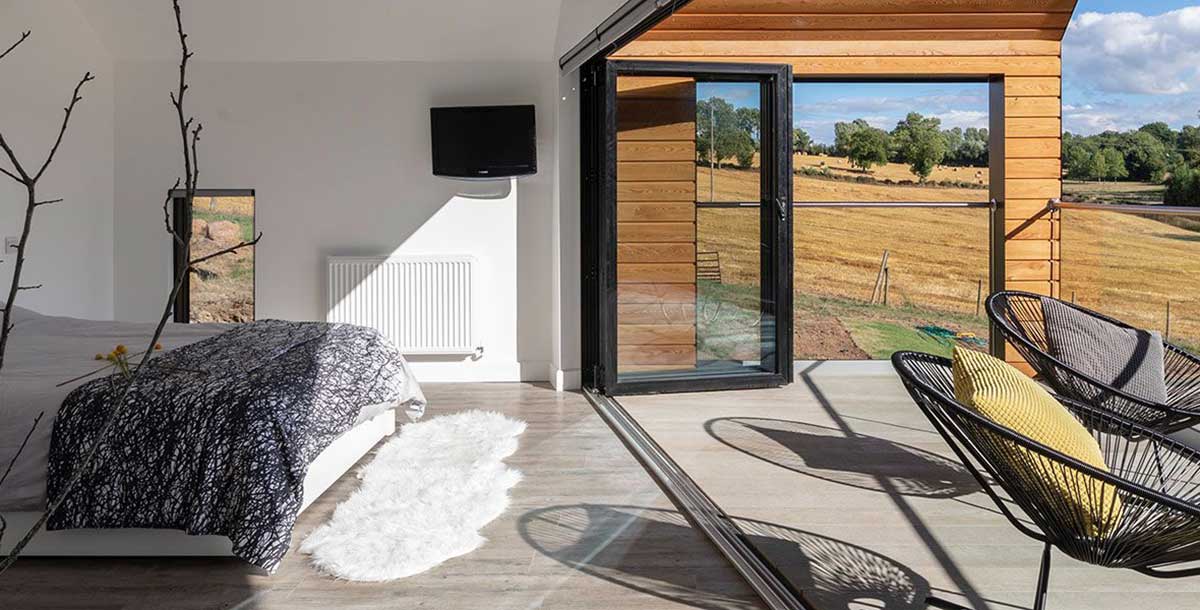The majority of self-builders will need to source a specialist product tailored to the requirements of building a home. This self-build mortgage advice can help you find the best product available.
Self-build vs traditional mortgages
The difference between self-build and traditional mortgages is that self-build products enable you to draw down funds at key stages of the build. You will typically receive the first payment when you buy the land, more when the foundations are laid and furthers payment when the home is built up to eaves level, the roof made watertight, and the interior walls are plastered. The last instalment is paid on completion.
Interest rates on self-build mortgages are higher than on traditional mortgages, but once the property is complete and has been valued, you’ll be prompted to remortgage to a conventional mortgage deal.
Types of self-build mortgages
There are two types of self-build mortgages – arrears and advance. Arrears self-build mortgages are the more common type, whereby payments are handed out after each stage of the build is completed. Advance mortgages offer payments at the beginning of each stage, which is better for those who have less money available upfront to fund their project.
A mortgage adviser will be able to tell you if your credit report is sufficient to obtain a self-build mortgage. Search for a qualified, impartial adviser that’s local to you by visiting unbiased.co.uk or vouchedfor.co.uk.
Which banks offer self-build mortgages?
Halifax is one of the only high street banks to offer a self-build mortgage, most are offered by specialist providers and building societies, meaning there are fewer products available than traditional mortgages.
Moneyfactscompare.co.uk currently lists 20 self-build mortgage products from the likes of the Ecology Building Society, Progressive Building Society and Loughborough Building Society. Darlington Building Society also offers self-build mortgages, and was the first lender to sign up for the Help to Build scheme (eight more are in the process of doing so).
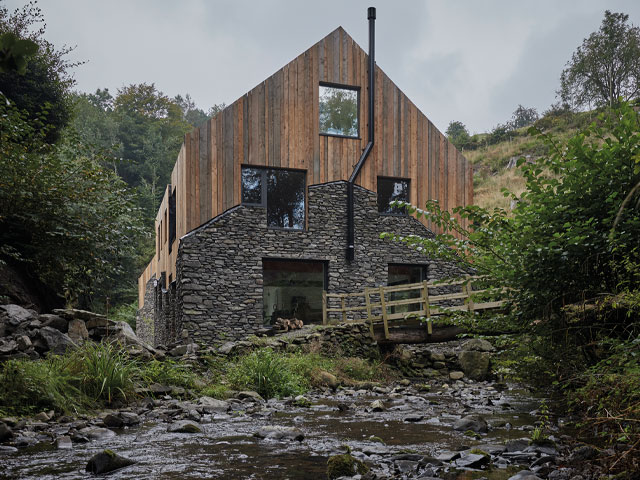
A mortgage was secured for this home, constructed from a crumbling Cumbrian mill, to pay back an interim loan from family members. Photo: Andy Haslam
Setting a self-build budget
Start by establishing a budget, which ideally you must stick to. There is no such thing as an average self-build cost, because issues such as ground conditions, access to the site, location and proximity of services all have an impact on expenditure. BuildStore offers build cost guides and calculators, as well as a free costing service.
As a rough guide, assess the amount of cash and equity, subject to lending criteria, you already have along with the total you can afford to borrow, and then calculate the size and type of house you can build with the funds available.
Or, if you know the size of the property you want, work out in reverse how much it will be to buy a suitable plot and build the home of your dreams on it. Factor in the cost of where you will live for the duration of the project. Can you stay on the site in a caravan, which you may have to buy, or will you need to rent somewhere to live?
Preparing a self-build mortgage application
A prospective lender will want to see evidence of the granted planning permission, detailed architectural drawings and specifications, as well as the total project costs. You need to be clear on all possible figures, such as fees for professional help, including valuations, as well as the build type, construction method and materials.
You can prepare a detailed plan yourself, but it may be wise to ask a financial specialist with a background in construction, a quantity surveyor or a project manager to create the documents for you, especially if you’re a first-time self-builder. They can prepare or evaluate a cost schedule to ensure your home can be completed to your budget.
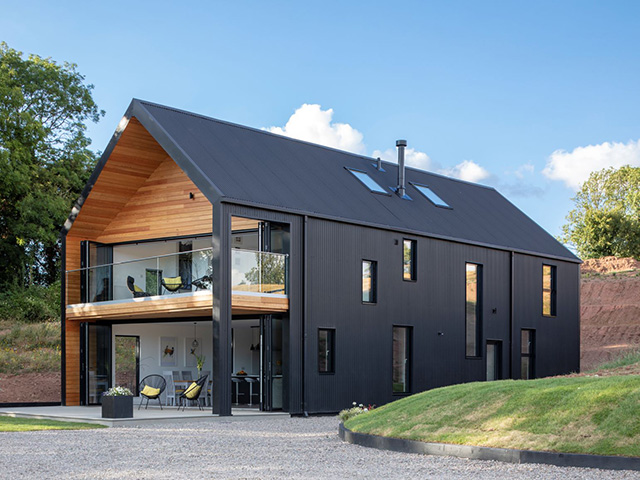
Steph and Alex Wilson funded their barn-style build with profits from a land sale and a small self build mortgage Photo: Mark Bolton
Monitor your spending
From the outset, it’s important to have as much detail about your incomings and outgoings as possible, so you know precisely how much money is required for each stage of the project.
In most cases, you will buy the land, make another payment when the foundations are finished, another one when the walls and roof are up, and so on. To establish your cash-flow pattern, you’ll need to know the schedule of works and the costs incurred for each stage.
Before you even start the construction you will have fees to deal with, such as legal costs, site surveys and planning charges. So always factor these into the cost plan. Remember, too, that although you can claim back the VAT on materials used in a self-build, if you are buying the materials yourself, you will have to pay for them first and then claim the tax back following completion.
As you’re responsible for paying bills, make sure that every penny is spent wisely and accounted for. Most self-builders create a spreadsheet to record expenditure in key areas such as professional fees, materials and labour. Also, it’s a good idea to keep a filing system for invoices, delivery notes and receipts. There will be hundreds of these, but you will need all of them to reclaim VAT.
The price of the plot is likely to be 30%, if not more, of your overall outlay. Setting aside an additional 10% is advisable for a flat site where the ground conditions are known, and 20% for a sloping plot or one where you’re not sure what may lie beneath the surface. (Remember the Malvern hill house episode of Grand Designs when Jon and Gill Flewers discovered that drainage and water services stopped 65m short of the property?).
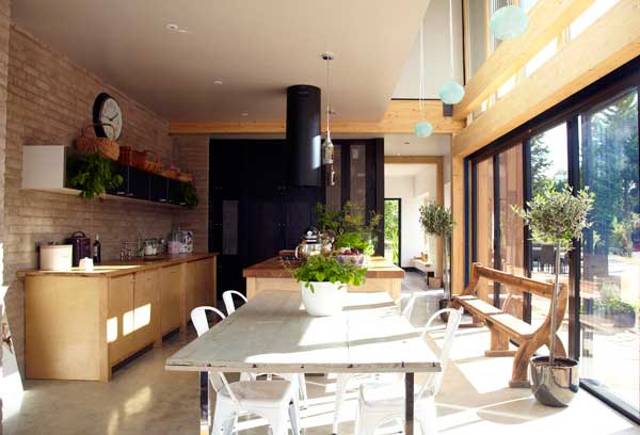
Partway through the build, a mortgage application for this home near York was rejected. The owners had to reduce their materials and fittings costs. Photo: Jefferson Smith
Reducing the cost of your self-build
Whatever your project, it’s vital to factor in a contingency fund. Remember that this is for unexpected costs only. Do not be tempted to use it to change your specifications to more expensive items.
You can get reliable estimates for labour and material costs based on your drawings at estimators.com.
There are ways to reduce construction costs. Try to source materials through your builder, usually the most cost-effective method as you will benefit from trade accounts. When managing your own project, don’t be afraid to ask suppliers for trade discounts.
If you can be flexible about materials, try companies that recycle materials, such as Builders Surplus, and Recipro.
Reclaim as much as you can when clearing the site, and reuse materials in your new-build. This not only saves on skip hire and disposal, it’s also a much more sustainable way to build.
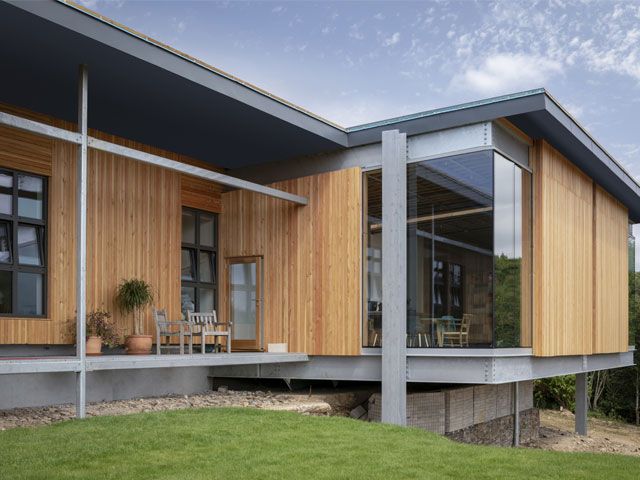
The amount of structural glazing was revised during the build to save on the cost of this five-bedroom family home in Padstow, Cornwall. Photo: Mark Bolton
Self-build mortgages: the basics
The self-build lending market demystified by Mary Riley of Mary Riley Solutions:
- Affordability assessments have recently been tweaked across all sectors of lending. When making an assessment for self-build funding, lending institutions use a stress test rate of interest which is higher than for more standard forms of borrowing. The stress test may change according to the Bank of England base rate.
- But the rate of interest applied to a self-build mortgage is much less than the stress test. Rather, the stress test rate is used to assess the payments you could afford should the rate of interest increase during the mortgage term.
- Lenders take into consideration increases in income tax and national insurance, energy prices, the cost of commuting to work and the costs of living such as food, household bills and clothing.
- The total project cost is also scrutinised to ensure everything associated with the construction is considered, including landscaping and professional fees. It is prudent to add a healthy contingency of between 20-30%. In the event the project stays on budget, you are not obliged to draw down funds you no longer require.
- It’s important to bear in mind that these assessments are made for your protection as well as the lender’s. There is a healthy appetite to lend in the self-build sector of the market.

